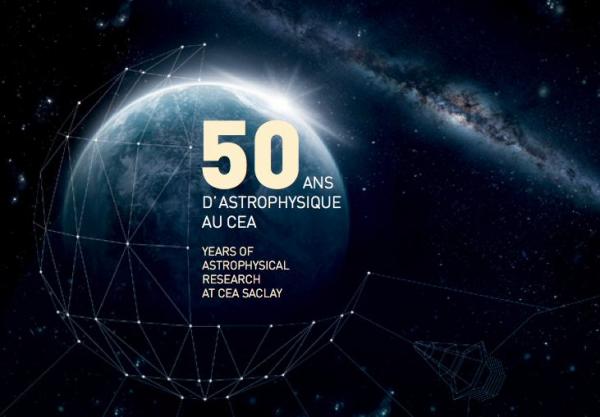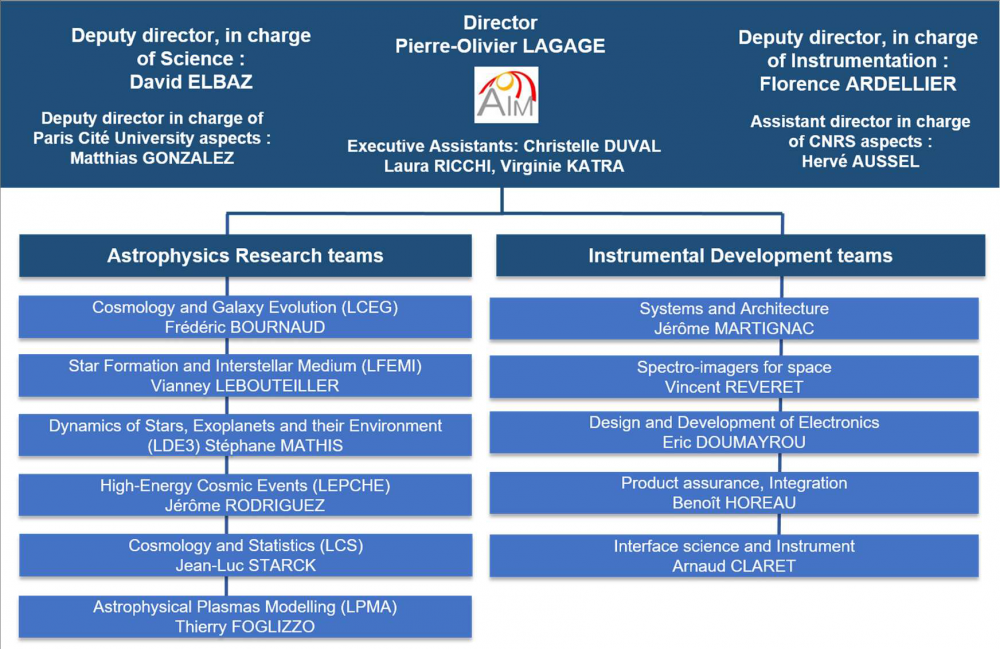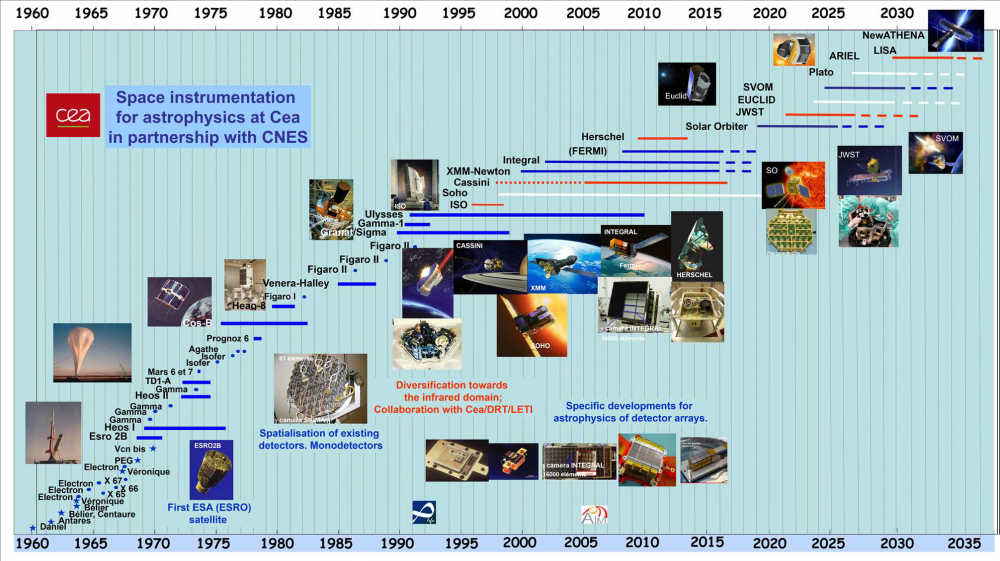A major space laboratory
The Department of Astrophysics (DAp), UMR (Unité Mixte de Recherche) AIM (Astrophysique, Instrumentation, Modelisation Paris-Saclay), within the IRFU (Institut de Recherche sur les lois Fondamentales de l'Univers), is one of the major space laboratories in France, Europe, and internationally.
The Department of Astrophysics
The Department of Astrophysics (DAp) is one of the departments within the Institute of Research into the Fundamental Laws of the Universe (Irfu) under the Directorate of Fundamental Research (DRF) of the CEA. It is located at the Paris-Saclay site, at l’Orme des Merisiers, 20 km south of Paris, and near several universities and other research centers on the Saclay plateau.
The DAp primarily encompasses the Joint Research Unit (UMR) AIM (Astrophysics, Instrumentation, Modeling), under the joint supervision of CEA, CNRS, Université Paris-Cité, and Université Paris-Saclay. Research conducted at AIM is based on three pillars: space instrumentation (with upstream R&D), observations (using innovative data analysis techniques), and modeling (primarily based on multi-scale numerical simulations). These three activities mutually reinforce each other in a virtuous cycle, enabling a high visibility profile, making AIM a dynamic and highly active research environment that meets the highest international standards.
The UMR AIM comprises approximately 190 people, including 110 permanent and 80 non-permanent members (see Key Figures). The unit includes:
- Research engineers and technicians from DAp and DEDIP (Department of Electronics, Detectors, and Computing for Physics) of the CEA’s IRFU;
- Professors and associate professors from the Physics Department of Université Paris-Cité;
- Researchers and ITA from INSU (National Institute for Earth Sciences and Astronomy) of CNRS;
- Astronomers from CNAP (National Council of Astronomers and Physicists);
- Professors from Université Paris-Saclay;
- Support staff.
Structure of AIM
AIM has two main objectives:
- To develop research programs in astrophysics at the highest international level;
- To develop advanced instruments necessary for this research, along with the associated ground segments.
To achieve these objectives, AIM is structured as follows:
- Leadership Team: Provides overall direction and strategic planning;
- Six Teams Organized by Scientific Themes: Focused on developing astrophysics research programs at the highest international level;
- Five Teams Organized by Technical Expertise: Dedicated to developing advanced instruments necessary for this research, as well as the associated ground segments.
Leadership Team
Given the objectives and the three supervisory institutions of AIM, the leadership team comprises:
- A director;
- A deputy director specifically responsible for astrophysics research;
- A technical director, who is also a deputy director for CEA;
- A deputy director responsible for aspects related to Université Paris-Cité;
- A deputy director responsible for aspects related to CNRS.
Astrophysics Research Team
To develop astrophysics research programs at the highest international level, the research division of the Department of Astrophysics is organized into six teams:
- Cosmology and Galaxy Evolution Team (LCEG);
- Star Formation and Interstellar Medium Team (LFEMI);
- Dynamics of Stars, Exoplanets, and their Environment Team (LDE3);
- High-Energy Cosmic Events Team (LEPCHE);
- Cosmology and Statistics Team (LCS);
- Astrophysical Plasma Modeling Team (LMPA).
Instrument Development Team
To develop the advanced instruments necessary for this research, along with the associated ground segments, the instrument division is organized into five teams based on the following competencies:
- Space Systems and Architectures Team: Responsible for system architecture definition and technical responsibility throughout the design, production, and testing of various instrument models;
- Space Spectro-Imagers Team: Conducts R&D on detectors ranging from far-infrared to gamma-ray wavelengths, including bolometers, micro-calorimeters, CMOS-MCT, or semiconductors for X-ray and gamma-ray detection;
- Study and Development of Space Electronic Systems Team: Defines, designs, and develops onboard electronic equipment with expertise in system electronic architecture, as well as analog or digital space electronics, particularly detection chains;
- Quality Assurance and Space Integration Team: Supports space projects in terms of Product Assurance and Quality Assurance, AIT activities throughout the development and implementation phases;
- Science and Space Instrument Interface Team: Acts as the interface between science and space instruments from design phases to operational flight phases, specifying instruments, developing data analysis software, and ensuring they meet scientific objectives.
History
Astrophysics at the CEA began in the 1960s with pioneering high-energy sky observation work using detectors installed in rockets (see Figure 1). A crucial diversification towards the study of the cosmos with infrared radiation was undertaken in the 1980s under the visionary direction of C. Cesarsky.
Another significant milestone for the laboratory was its integration into the Institute of Research into the Fundamental Laws of the Universe (IRFU) in 1992, becoming one of the seven departments of IRFU. This integration provided AIM with the opportunity to develop instrumental projects with the technical departments of IRFU, mainly the Department of Systems Engineering and the Department of Electronics, Detectors, and Computing, and to develop scientific projects with the Department of Particle Physics and the Department of Nuclear Physics.
The UMR AIM was established on January 1, 2005, to strengthen the long-standing collaboration between researchers from the Department of Astrophysics (DAp) of CEA/IRFU, CNRS/INSU researchers, present since 1979 as an associated research unit, and professors and associate professors from Université Paris-Cité, present since 1997 as a research team named "γ-gravitation."
In 2020, the UMR AIM joined the Paris-Saclay Observatory of Sciences of the Universe (OSUPS).






